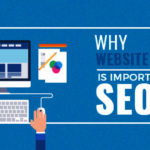Creating a website has become very easy today. You can have a website up and running within a few hours. And no, you don’t need to be a computer engineer or a coder to create your website. Website creation platforms have made it easy for any layman to come up with a website all by herself.
However, the challenge is in creating a successful website that serves the purpose you built it for. This could be getting sales, selling events, creating a brand or a non-profitable cause. Nobody wants a website that has little traffic and makes no impact.
There are many factors that go into making a website successful. Here we list the 10 most important factors that matter. From ideation to monetization, these steps cover everything and even mention common mistakes new website creators make.
1. Goal Setting
Your website could be the start of a new business or an addition to your current business. In any case, defining the purpose of your website is a must before you start. Ask yourself why you are building this website? Is it to makes sales, get publicity or build a loyal audience for? After the purpose is defined you should set a concrete goal for your website.
It’s advisable to write down a goal statement for your website. The goal should be SMART – Specific, Measurable, Achievable, Relevant and Time-bound. An example of a SMART goal could be – build a mailing list of 1000 would-be-brides using lead-pages in next 3 months.
Very few people set concrete goals for their online presence and this is why most websites fail. When you have your goal in front of you, you can build plans to achieve it. Without a goal and plan you are just shooting in the dark and are likely to lose track of your purpose.
2. Market Analysis
Once you have the goal clear you will know the market you want to compete in. Picking the right niche is especially important for sites that want to attract traffic and make money out of it. Even if your site is only for brand building and web-presence it makes sense to see sites of related business and learn from it.
Its advisable to pick a niche (market segment) that is specific yet sizable. Some examples of niche are – gamers, would-be-moms, technology geeks etc. It’s very important to survey the web for sites that are already catering to the niche you have chosen. Some online business chase after niches that are already overflowing with great quality content and end up failing.
For example, it would be foolish to start a website about technology gadgets. Huge websites like Forbes and Wired are already publishing great content everyday! Unless you have 50 years or 10 million in your bank account, it would be a total loss to enter this niche. You site will never be found in Google against these giant sites.
What you can do is pick up a narrower market within that niche. So instead of going for gadgets in general, you could go for gadgets for teenage gamers.
3. Hosting and Domain Name
If you are just getting started website creation platforms like WordPress, Joomla and Wix are quick and easy way to build your site. They offer hosting, domain name and themes themselves or in partnerships with other hosting companies. You can also purchase domain name and hosting from a domain register and web hosting company (like Go Daddy or Bluehost). These can then be integrated into WordPress, Joomla or Wix.
Domain name should clearly reflect what your site is about and should be memorable. Although domain extensions (.com, .net, .co.in etc.) do not affect SEO directly, .com is always preferred because it is default in the minds of most users.
As far as hosting is concerned buy from a company that is reputed and has a great customer support. If you do not have technical knowledge it is important that your hosting company supports you with 24×7 live chat in. For some companies live chat is only available on premium plans. Its advisable to sigh up for that or upgrade to it as soon as possible. Issues like domain linking, data backup, website downtime or security concerns are common so chose your hosting wisely.
Shared hosting (like the one Bluehost offers) is perfect for new websites on a limited budgets. The basic plan costs you less than $3 a month. Once you scale up you can always switch to dedicated servers which cost more than$100 a month.
4. Theme and Design
Theme and design affect the user experience on your site. If you got the first steps of setting a goal and picking a niche market right, you will know exactly who your target audience is by now. Design is all about putting yourself in your visitor’s position and knowing what will appeal to them.
As far as themes are concerned you can get hundreds of free themes or buy one between $10 to $100.Free themes will limit site customization and give you less control compared to paid ones. However, based on your needs even a free one could be perfect for you. So spend time and select a theme that serves your purpose now. Remember, you can always change your theme in future.
5. User Experience
Design your site according to the purpose of your visitor. Too many people get caught up on making their site look pretty and forget about functionality. Remember that the visitor is not coming to your site to marvel at design but to complete a sale / read a blog. Amazon can make their site more minimalistic and beautiful, but that will not serve the purpose of visitors who come there for reviews and description of products they want to buy.
Make a flowchart of what the visitor’s journey should be on your website. Develop a sitemap and menu navigation that reflect this journey. This should also give a clear idea of where to place call to action buttons and layout of lead-pages.
6. Traffic Generation
You have made an amazing site that caters to a great niche. Now how do you make sure the right people come to it? Just publishing your site does not get traffic to your site and you will have to use one of the following ways to get visitors on your site:
- Social Media – You could build your social media following and direct them to your site. Platforms like Instagram and Pintrest are great for visual products like fashion and visual arts. LinkedIn is great for attracting B2B customers.
- Mailing List – You could send our weekly mailers linking to your site if you already have a mailing list. This could be the email addresses of your past customers or leads collected through marketing.
- SEO – You could simply rely on Google to get you traffic by aiming to rank high on Google search results. This requires some time and content stategy.
- Paid Ads- You could place ads in Google, Facebook, Instagram etc.to show your site to people who fit your target market profile? This is a very targeted and profitable way to get your site going however its not sustainable for long term.
In whatever method you choose above, you need to have quality content to share on social media, send in mailers and to rank on Google. This brings us to the next important factor that matters in creating a successful website.
7. Content
Content is the backbone of any website today. As softwares are get smarter at blocking ads, sites have to rely on value-added content to pull people in. A good title in search result is what compels people to visit your site. If you answer their question or solve their need by the end of the blog/ video, you have earned their trust..
Unless you are purely into e-commerce it is a must to have blogs, videos or podcasts that will get people to your website.
You can only be found on web if you write about what people are searching for or help them out in some way. This can be done by writing helpful blogs, e-books or guides. But perhaps the most important form of content today is video. Video already accounts for 73% of all internet traffic and is estimated to go upto 83% by 2020 (Cisco). Youtube is one of the best ways to generate traffic and build a loyal audience today.
You can make how-to videos, screenshot videos or live-shoots based on your topic. If you are a small start- up even videos of helpful tips shot on your mobile phone will do. The important factor is that the content should be helpful, entertaining of educational. People prefer videos to reading a blog so you just cannot miss on video marketing today.
8. Security
Imagine losing your site to hacking attacks once you have started getting traffic. This is not uncommon and hundreds of websites running on WordPress and Joomla are hacked every day. The most common motive to hack websites is to redirect your traffic to malicious sites, send phishing emails or serve illegal files. So your site doesn’t have to be big for it to be hacked. Its better to be secure from the day you set up your site.
Getting your site up and running and retrieving all your data can be a nightmare for a common man in case of hacking attack. Follow these best practices to avoide falling prey:
- Update to latest versions of CMS software and plugins
- Monitor your Comments and public forums for hacking scripts
- Use strong passwords for you and your user’s logins
- Do not allow file uploads without scrutiny
- Get your site checked with free security tools like Netsparker or OpenVAS
- If you collect visitor information or sell online you have the additional responsibility of ensuring that the visitor’s information is safe. Use HTTPS protocol for your site
9. Collaboration
Social media is all about collaboration and cross promotion. Influencer marketing has emerged as an effective marketing strategy and has replaced traditional marketing for many brands. The reason is simple. Influencers may have lesser eyeballs than television or hoardings but they are deeply connected to their followers online. Collaborating with real people in your niche is one of the best ways to get quality following to your website.
Influencer marketing is not the only way you can collaborate. Off-line events and promotions are also great to get noticed by your market. Do not discount the power of seminars, exhibitions and on ground communities when it comes to promoting your website.
You can also work with brands that are complementary to your niche. For example, a gaming website could partner in an Xbox event for gamers.
10. Continuous Improvement
Never make the mistake of thinking your website is ready and can be left to get traffic. Things are always changing in digital world. There will be new websites coming in, newer tools manage websites and new ways to market online. While you don’t have to work as hard as you did while creating the website, some amount of weekly time for maintenance is a good idea, only if you want to grow your business.
For continuous monitoring and improvement, use tools like Google console. It gives you traffic to your site, pageviews, bounce rates and average browsing time. Based on these statistics you can know what content is working for your audience and tweak your strategy accordingly.
Tools by Hubspot give you services to manage you email marketing and content marketing. Heatmap and visitor activity report by Crazy is great way to know what your visitors are doing on your site and where they are dropping out.
There are many more tools improve your site daily and collect more feedback. Perfecting your website and conversion funnel is a never ending process and it will depend on how far you want your website to go.
Also Read : Why Website Design Is Important For SEO







